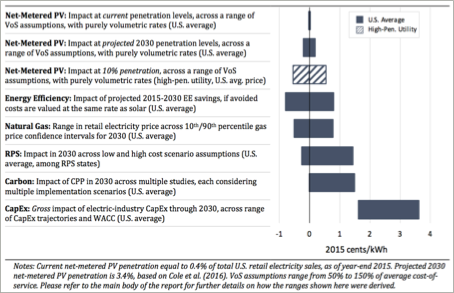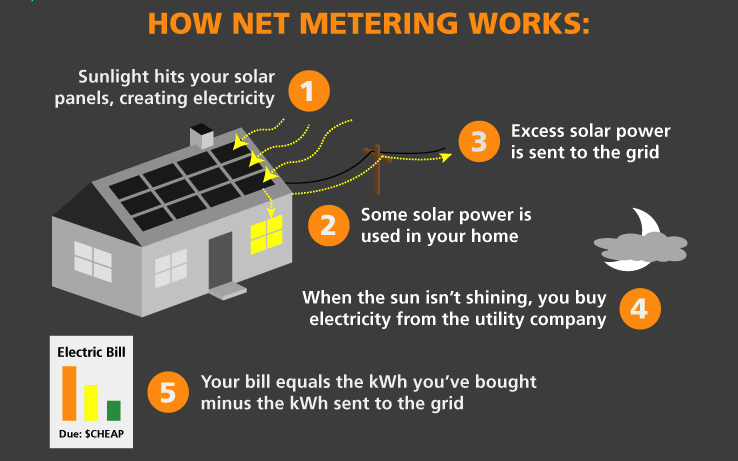Be a solar champion: Support the Solar Fairness Act
Legislators can build on Washington’s successful net metering policy by increasing the cumulative generation capacity threshold for metering in each utility territory. There’s room for more solar in Washington.
The Solar Fairness Act (SB 5223):
- Provides a badly needed update to Washington’s outdated net metering policy.
- Raises Washington’s energy mix to ~1% solar. To do that, SB 5223 lifts the minimum threshold for cumulative net-metered electricity from 0.5% to 4% of each utility’s 1996 benchmark, as passed in a bipartisan Senate vote in 2018.
- Provides that each March 31, any excess solar kilowatt-hours be used offset the utility bills of low-income residential customers.
- Requires utilities to include on customer bills the total amount of electricity (kWh) consumed over the past 12 months.
Vote “Yes” on 5223.
Background: net-metered solar in Washington
Solar in Washington
Very little (less than 0.1%) of Washington’s electricity comes from solar. Most states have much more solar power than we do, including Oregon (0.27% of the OR power mix), and California (10%). Most of Washington’s solar comes from very small systems, each with about 2 dozen panels. These home solar systems are interconnected to the broader grid via simple net metering.
Although a small part of our electricity, solar has been very successful for Washington:
- 18,000 net-metered solar systems on homes and businesses
- $460,000,000 in private investment
- 4,000+ family-wage jobs.
What does “net metering” mean?
Net metering is a kind of utility bill structure for people who produce some of their own power. With net metering, homes and businesses get full credit off their utility bill for any electricity they produce themselves: any solar power they make is credited 1-for-1 as electricity they don’t have to buy from the utility. Net metering only applies to electricity, measured in kilowatt-hours (kWh), that a customer would otherwise buy from the utility.
Net-metered solar owners still pay the utility’s bill’s full “fixed charges,” which are designed to cover the utility’s fixed assets, like poles and wires. Net metering is just common-sense fairness: that’s why it’s the foundational policy of solar power.
What is Washington’s net metering policy?
Our state first enacted net metering for solar owners in 1998 (WAC 80.60). Washington’s 60+ electrical utilities were required to offer net metering up to a minimum threshold for total customers wishing to produce some of their own power. That bare-minimum threshold was originally pegged at 0.25% of each utility’s peak demand for electricity in 1996. In 2014, the net metering threshold was updated to 0.5% of 1996 peak power for all utilities. It has not been updated since.
Once utilities have allotted net metering contracts up to their bare-minimum threshold, Washington’s law does not stipulate a required next step. Utilities can propose other rate structures for solar owners, including extreme positions, like undercutting contracts with their existing solar customers, and ending net metering for new solar customers.
Note that statutory net metering thresholds are not the total amount of solar on Washington’s grid. Even though some of our utilities have already surpassed their 0.5% threshold for net metering, Washington’s grid still sources less than 0.1% of its total power mix from solar.
Does solar work without net metering?
Across the US, net metering is the foundational policy of solar’s success.
Where utilities don’t allow net metering, solar owners earn only partial kilowatt-hour credit for the power they make. They can use batteries to store their solar power for their own later use, or they can settle for partial credit from their utility.
If you can’t earn full credit for the power you make, very few people can afford solar. Interconnection agreements other than net metering effectively tax solar owners for making their own power. That’s like a grocery store charging a fee to a gardener who grows her own tomato.
90% of Washington voters live in the 18 utility districts that have surpassed our outdated net metering threshold. In these utility districts, existing solar owners’ net metering contracts could be revoked, and doors could shut at any moment for new solar owners. Existing solar customers, future solar owners, utilities, and Washington’s solar companies are waiting in legislative limbo.
The Solar Fairness Act has no impact on the State budget
Solar owners pay their fair share for the grid.
If utilities close net metering, new solar owners may leave the grid by adopting increasingly affordable battery technology. Off-grid homes and businesses pay no utility rates or fixed charges.
Solar does not threaten utility revenue
SB 5223 is a simple administrative update, with no cost to the state. There is a small budget note to pay state staff to study future options for crediting solar owners for the power they make.
Solar owners pay their fair share for the grid
Net-metered solar is similar to energy efficiency. Just as efficient appliances help families trim – but
not eliminate – their power bills, few solar owners can offset their whole electric bills with solar. They
still buy the balance at full retail rate, and always pay the same fixed charges as everyone else.
If utilities close net metering, new solar owners may leave the grid by adopting increasingly affordable battery technology. Off-grid homes and businesses pay no utility rates or fixed charges.
Solar does not threaten utility revenue
Some utilities have opposed net metering, arguing that cost-shifting occurs when solar consumers produce and receive credit for their own power because the utility’s cost (reduction in revenue) gets displaced to non-solar customers. But this argument has been disproven by 16 different state-level studies, plus a definitive national study performed by the Lawrence Berkeley National Lab (LBNL). LBNL study found that most states—all but three, in fact (CA, NV, HI) — have a negligible solar power cost shift at all. This is because most states have solar penetration levels far below 10%. Until solar supplies 10% of a state’s grid, there’s no cost shift at all.
Perhaps even more surprisingly, even at grid saturation levels of 10% or higher, the “shift” is only 5/1,000 of one cent per kilowatt-hour. Ultimately, even at high rates of solar saturation, the effects on the bills of non-solar consumers are infinitesimal.
Furthermore, the argument doesn’t take into account the benefits of having more solar on the grid brings, including peak-shaving (the easing of grid strain during periods of high electricity use), utilities’ avoided costs (the more solar on the grid, the fewer expensive traditional power plants they have to build) and, naturally, the environmental benefits.
- Solar impacts electricity rates nationally by +/- $0.0003/kWh.
- Solar’s rate impacts are minute against energy efficiency, natural gas, and utility capital expenditures.
- In fact, data indicates that solar owners may decrease electricity rates for all.

Any current solar cost-shifting arguments must be proven with data for each relevant utility district.
Net metering builds clean energy jobs in our state. There’s room for more solar in Washington’s future.
Learn more at SolarStrongWA.org
Citations
- Washington State Legislature – SB 5223 – 2019-20 Concerning net metering
- Artisan Electric – Keep Washington Solar Strong
Last Modified: February 5, 2019

